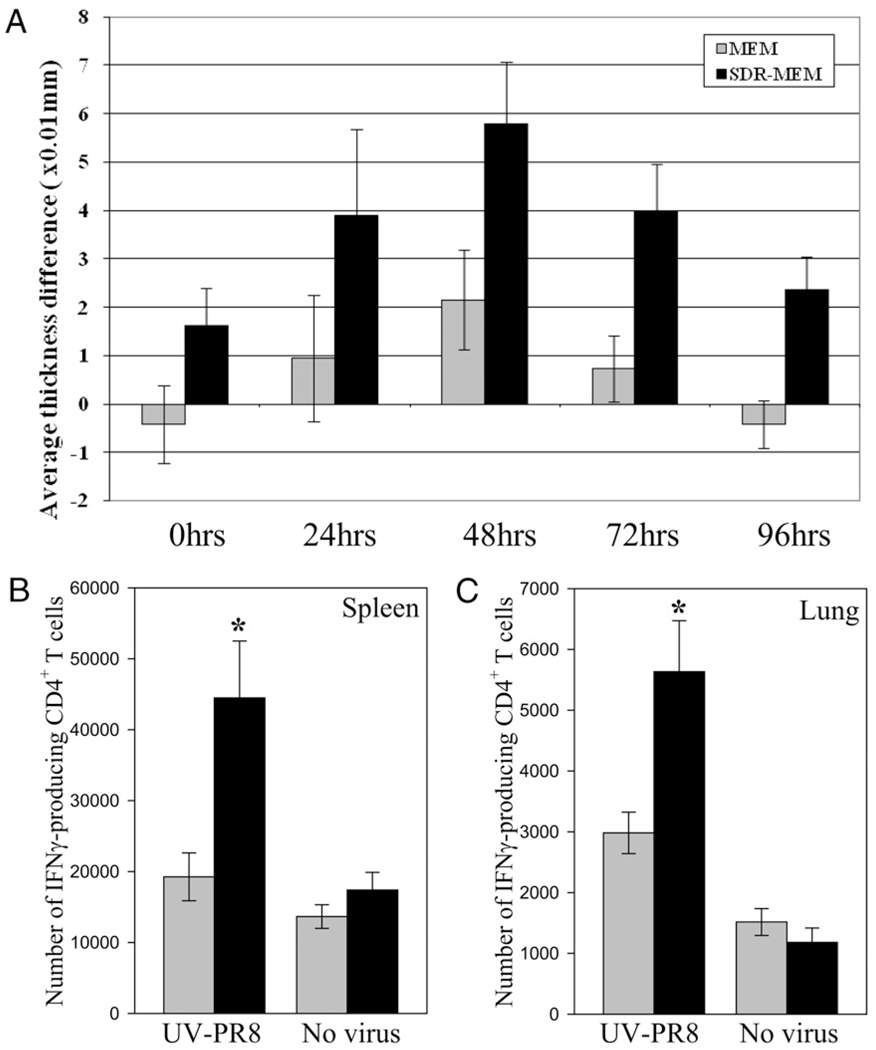FIGURE 1.
In vivo and ex vivo screening assays confirmed enhanced anti-influenza immune responses in SDR-MEM mice. A, SDR-MEM mice developed a significantly greater DTH response over time versus nonstressed memory controls (MEM) following s.c. footpad injection with influenza A/PR/8/34 Ag. Each animal served as its own control, with one saline-injected and one Ag-injected footpad measured at 24-h intervals. Values were analyzed by subtracting the saline-injected footpad thickness from the Ag-injected footpad thickness at each time point (RM-ANOVA; SDR > MEM; p < 0.001; n = 20 per group). Values shown represent group mean ± SEM. This dataset is representative of four separate experiments. Mixed cell preparations from individual spleen (B) or lung (C) tissues taken from MEM or SDR-MEM mice at 6 wk post-A/PR/8/34 infection were cocultured with UV-PR8 for 6 h and then the anti-influenza CD4+ T cell response was assessed via flow cytometry. Organs were analyzed individually with n = 5–7 per group. *p < 0.05.

